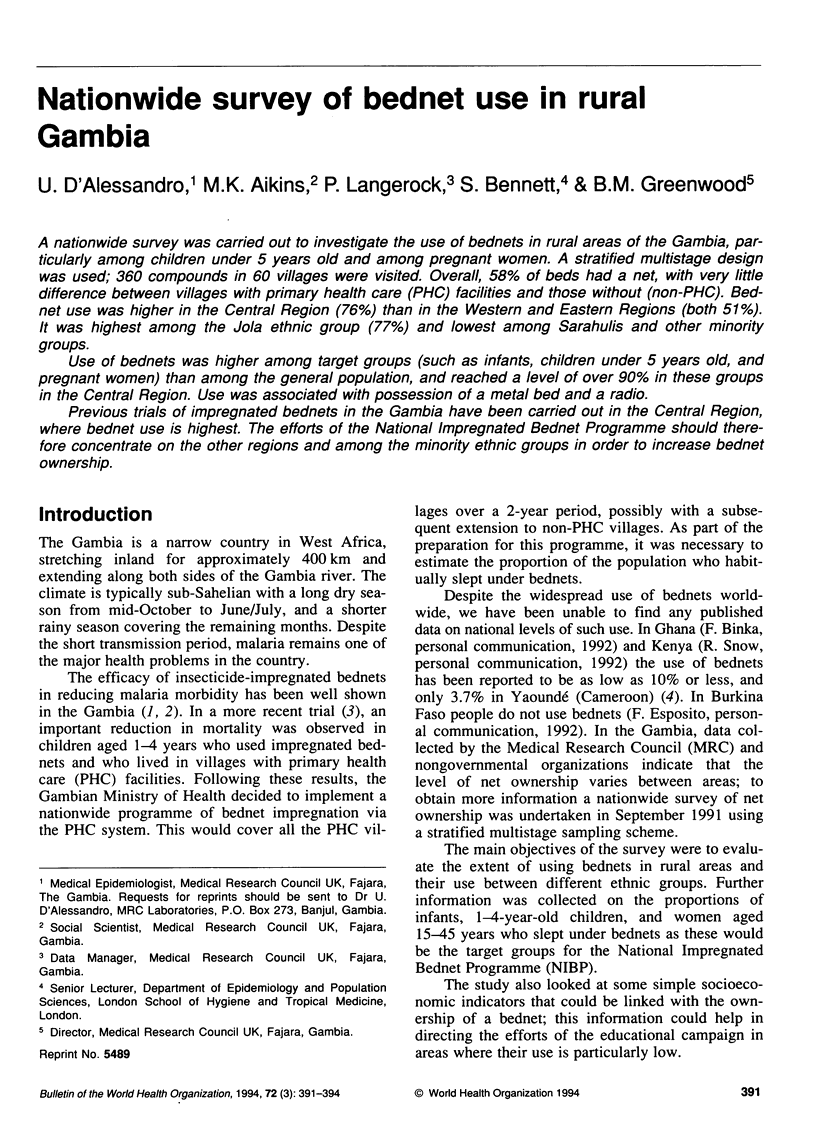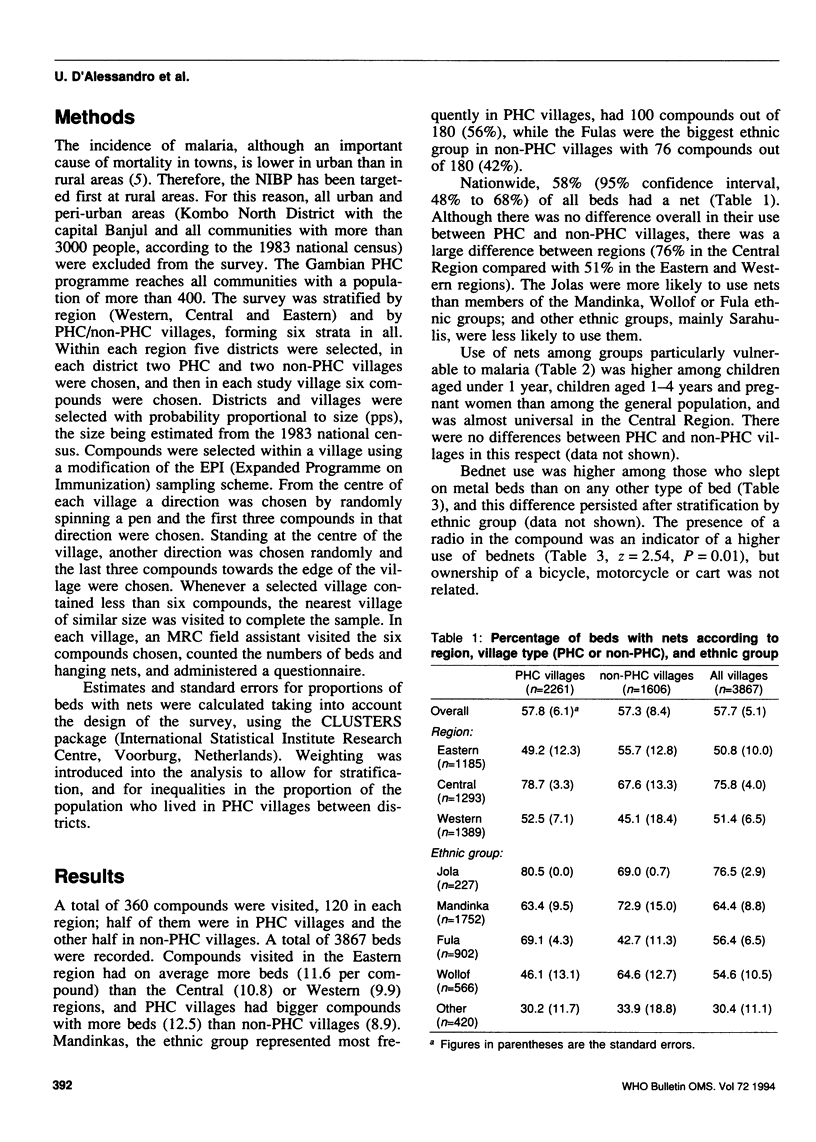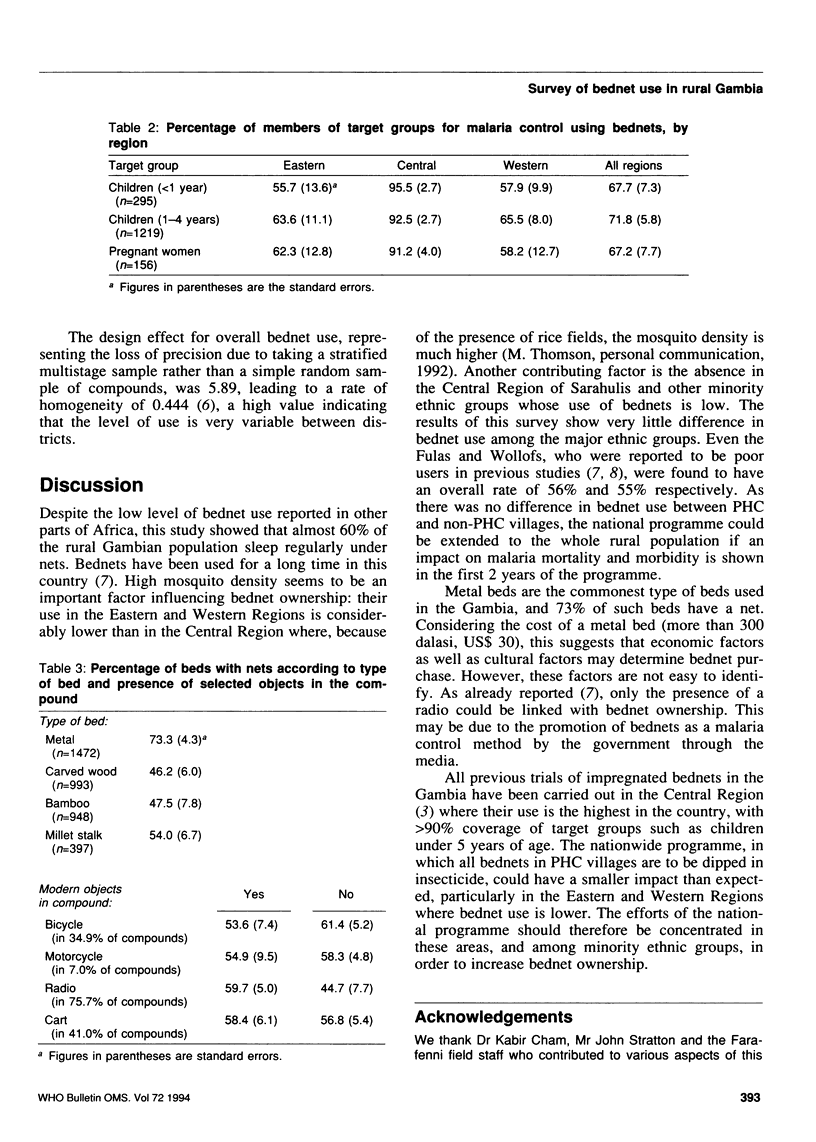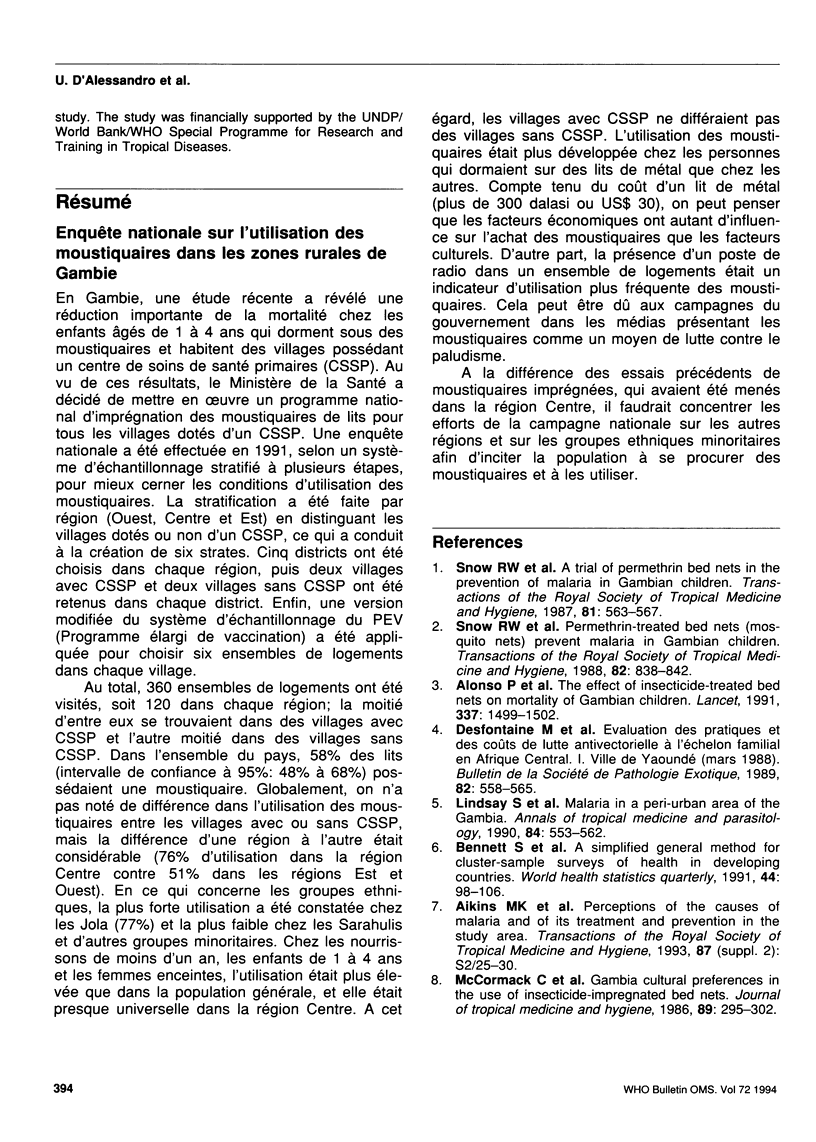Abstract
A nationwide survey was carried out to investigate the use of bednets in rural areas of the Gambia, particularly among children under 5 years old and among pregnant women. A stratified multistage design was used; 360 compounds in 60 villages were visited. Overall, 58% of beds had a net, with very little difference between villages with primary health care (PHC) facilities and those without (non-PHC). Bednet use was higher in the Central Region (76%) than in the Western and Eastern Regions (both 51%). It was highest among the Jola ethnic group (77%) and lowest among Sarahulis and other minority groups. Use of bednets was higher among target groups (such as infants, children under 5 years old, and pregnant women) than among the general population, and reached a level of over 90% in these groups in the Central Region. Use was associated with possession of a metal bed and a radio. Previous trials of impregnated bednets in the Gambia have been carried out in the Central Region, where bednet use is highest. The efforts of the National Impregnated Bednet Programme should therefore concentrate on the other regions and among the minority ethnic groups in order to increase bednet ownership.
Full text
PDF



Selected References
These references are in PubMed. This may not be the complete list of references from this article.
- Aikins M. K., Pickering H., Alonso P. L., D'Alessandro U., Lindsay S. W., Todd J., Greenwood B. M. A malaria control trial using insecticide-treated bed nets and targeted chemoprophylaxis in a rural area of The Gambia, west Africa. 4. Perceptions of the causes of malaria and of its treatment and prevention in the study area. Trans R Soc Trop Med Hyg. 1993 Jun;87 (Suppl 2):25–30. doi: 10.1016/0035-9203(93)90172-m. [DOI] [PubMed] [Google Scholar]
- Alonso P. L., Lindsay S. W., Armstrong J. R., Conteh M., Hill A. G., David P. H., Fegan G., de Francisco A., Hall A. J., Shenton F. C. The effect of insecticide-treated bed nets on mortality of Gambian children. Lancet. 1991 Jun 22;337(8756):1499–1502. doi: 10.1016/0140-6736(91)93194-e. [DOI] [PubMed] [Google Scholar]
- Bennett S., Woods T., Liyanage W. M., Smith D. L. A simplified general method for cluster-sample surveys of health in developing countries. World Health Stat Q. 1991;44(3):98–106. [PubMed] [Google Scholar]
- Desfontaine M., Gelas H., Goghomu A., Kouka-Bemba D., Carnevale P. Evaluation des pratiques et des couts de lutte antivectorielle a l'échelon familial en Afrique centrale. I. Ville de Yaoundé (mars 1988). Bull Soc Pathol Exot Filiales. 1989;82(4):558–565. [PubMed] [Google Scholar]
- Snow R. W., Lindsay S. W., Hayes R. J., Greenwood B. M. Permethrin-treated bed nets (mosquito nets) prevent malaria in Gambian children. Trans R Soc Trop Med Hyg. 1988;82(6):838–842. doi: 10.1016/0035-9203(88)90011-9. [DOI] [PubMed] [Google Scholar]
- Snow R. W., Rowan K. M., Greenwood B. M. A trial of permethrin-treated bed nets in the prevention of malaria in Gambian children. Trans R Soc Trop Med Hyg. 1987;81(4):563–567. doi: 10.1016/0035-9203(87)90408-1. [DOI] [PubMed] [Google Scholar]


